Top Rankings
Webster City Comm School District ranks among the top 20% of public school district in Iowa for:
Category
Attribute
Diversity
Most diverse schools (Top 1%)
Community Size
Largest student body (number of students) (Top 1%)
For the 2025 school year, there is 1 public middle school serving 436 students in Webster City Comm School District. This district's average middle testing ranking is 3/10, which is in the bottom 50% of public middle schools in Iowa.
Public Middle School in Webster City Comm School District have an average math proficiency score of 64% (versus the Iowa public middle school average of 64%), and reading proficiency score of 65% (versus the 71% statewide average).
Minority enrollment is 32% of the student body (majority Hispanic), which is more than the Iowa public middle school average of 25% (majority Hispanic).
Overview
This School District
This State (IA)
# Schools
5 Schools
376 Schools
# Students
1,724 Students
127,807 Students
# Teachers
120 Teachers
8,868 Teachers
Student : Teacher Ratio
14:1
14:1
District Rank
Webster City Comm School District, which is ranked within the bottom 50% of all 325 school districts in Iowa (based off of combined math and reading proficiency testing data) for the 2021-2022 school year.
The school district's graduation rate of 90-94% has decreased from 95% over five school years.
Overall District Rank
#244 out of 327 school districts
(Bottom 50%)
(Bottom 50%)
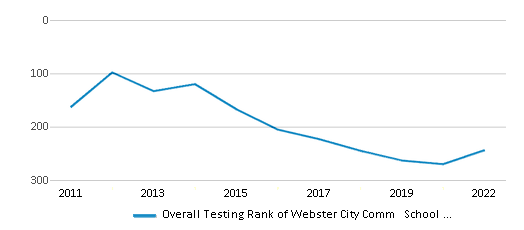
Math Test Scores (% Proficient)
63%
64%
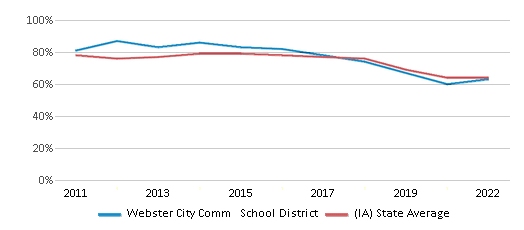
Reading/Language Arts Test Scores (% Proficient)
64%
70%
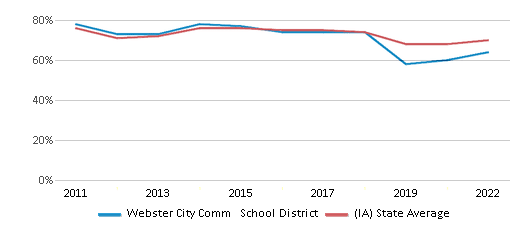
Science Test Scores (% Proficient)
56%
63%

Graduation Rate
90-94%
90%
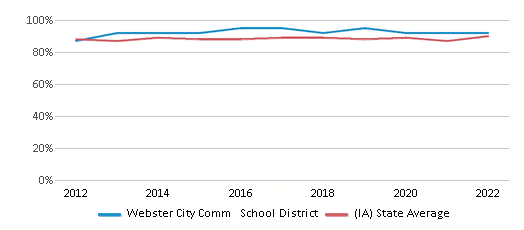
Students by Ethnicity:
Diversity Score
0.49
0.43
# American Indian Students
6 Students
711 Students
% American Indian Students
n/a
n/a
# Asian Students
74 Students
2,758 Students
% Asian Students
4%
2%
# Hispanic Students
434 Students
14,712 Students
% Hispanic Students
25%
11%
# Black Students
10 Students
7,560 Students
% Black Students
1%
6%
# White Students
1,158 Students
95,300 Students
% White Students
67%
75%
# Hawaiian Students
n/a
746 Students
% Hawaiian Students
n/a
1%
# Two or more races Students
42 Students
5,934 Students
% of Two or more races Students
3%
5%
Students by Grade:
# Students in PK Grade:
19
157
# Students in K Grade:
139
170
# Students in 1st Grade:
142
177
# Students in 2nd Grade:
135
171
# Students in 3rd Grade:
133
167
# Students in 4th Grade:
129
559
# Students in 5th Grade:
104
5,544
# Students in 6th Grade:
119
24,308
# Students in 7th Grade:
121
36,022
# Students in 8th Grade:
130
37,018
# Students in 9th Grade:
139
8,339
# Students in 10th Grade:
135
5,155
# Students in 11th Grade:
133
5,047
# Students in 12th Grade:
146
4,973
# Ungraded Students:
-
-
District Revenue and Spending
The revenue/student of $16,688 is higher than the state median of $16,468. The school district revenue/student has stayed relatively flat over four school years.
The school district's spending/student of $14,226 is less than the state median of $16,042. The school district spending/student has stayed relatively flat over four school years.
Total Revenue
$29 MM
$8,262 MM
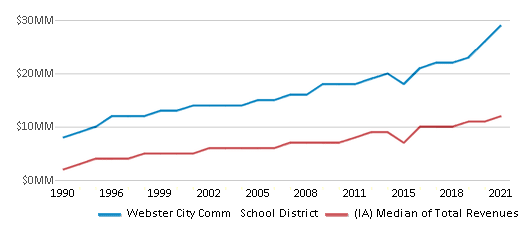
Spending
$25 MM
$8,048 MM
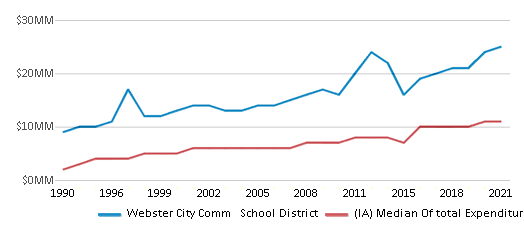
Revenue / Student
$16,688
$16,468
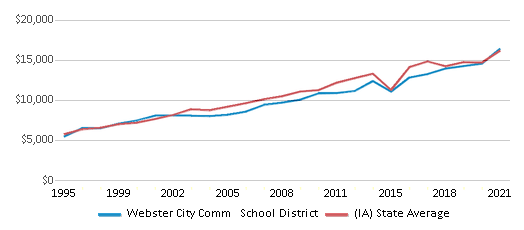
Spending / Student
$14,226
$16,042
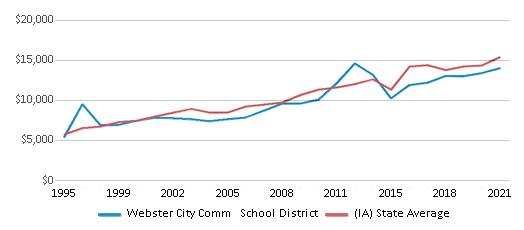
Best Webster City Comm School District Public Middle Schools (2025)
School
(Math and Reading Proficiency)
(Math and Reading Proficiency)
Location
Grades
Students
Rank: #11.
Webster City Middle School
(Math: 64% | Reading: 65%)
Rank:
Rank:
4/
Bottom 50%10
1101 Des Moines Street
Webster City, IA 50595
(515) 832-9220
Webster City, IA 50595
(515) 832-9220
Grades: 5-8
| 436 students
Recent Articles

Sexual Harassment at Age 6: The Tale of a First Grade Suspension
A six-year old in Aurora, Colorado, was suspended after singing an LMFAO song to a little girl in his class and reportedly “shaking his booty.” We look at the case and the sexual harassment problem in public schools today.

How Scaffolding Could Change the Way Your Child Learns
This article explores the concept of instructional scaffolding, a teaching method that enhances learning by breaking down complex tasks into manageable parts. It highlights how scaffolding supports students in developing critical thinking skills and becoming more independent learners. The article discusses the benefits of scaffolding, including improved engagement and reduced anxiety, and provides strategies for its implementation across various educational levels.

February 05, 2025
Understanding the U.S. Department of Education: Structure, Impact, and EvolutionWe explore how the Department of Education shapes American education, from its cabinet-level leadership to its impact on millions of students, written for general audiences seeking clarity on this vital institution.





